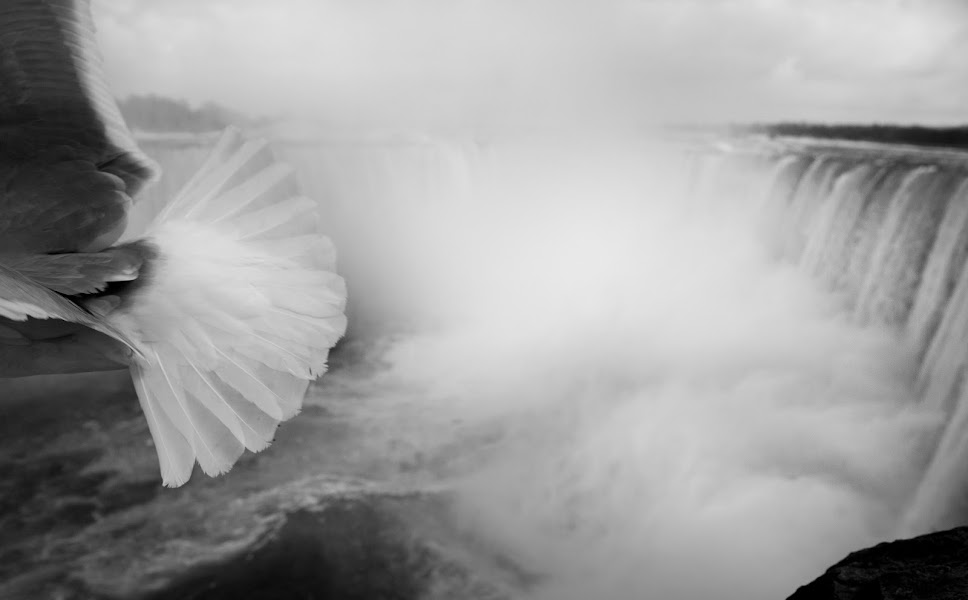I only recently wrote a column for the new NPAC site about multimedia and what it should mean to Canadian photojournalists. The original column can be found here.
[NPAC stands for News Photographers Association of Canada and is the result of the Canadian News Photographers Associations - and Eastern and a Western - combining to form what will hopefully be a stronger, more unified organization.]
In the column I mentioned that through my limited experience with sound, and video to date, the thing that has been most obvious to me is that it is very difficult to shoot both stills and video at the same assignment. I was firm in my belief that if and when I decided to shoot a story on HD Video I would dive in whole hog, and shoot only video. One camera only. That was my intention.
I maintain that mixing the two, stills and video, can be difficult, and perhaps even counterproductive, but yet on my most recent assignment, a large project for The Globe and Mail, I've already broken my own rule.
The project I'm working on at this time, we're actually at the editing stage, will be quite extensive, with plenty of stills, audio, and yes, video. I can't speak of the story except to say that it should be published in the next few weeks(late November or early December).
Since the project is an important one for The Globe and Mail, I initially elected to shoot it only in stills, and to collect some audio. Management was okay with my decision, but I gradually learned that there were some who hoped I might come back with some video for the production as well. After only a short time shooting, and planning for a road trip for the story, it became evident that I might have enough time with some of the subjects to shoot some video. I figured I'd give more video a try if, and only if I was happy with the stills I was getting for the story. At least if I had a camera along I could do some interviews, and control the audio for voice-overs for slideshows, similar to what I had done for the Black Tickle story. The understanding was that we would use video only if I was happy with the visuals, and if I didn't feel comfortable, I wouldn't continue to shoot video. If I got some good footage that would be a bonus, and it might be a good learning experience. The grins from my editors weren't hidden very well as I headed out the door to rent a HD video camera for the trip I had planned.
Two weeks later, after many hours of shooting, my work was compressed into several hundreds of still images, about three hours of miscellaneous audio, and about six hours of HD Video. I stuck to my original plan, and shot video only for my interviews, and only after I was happy with the still images I was getting. I found that shooting video was beginning to really interest me, and I was getting into it far more than I wanted to admit to myself. By the time I finished my last shoot for this assignment last week, I was shooting about 75% of the time on HDV, and very few still images with my MkIIs. What was happening to me?
I have to say that I don't think I am anywhere near ready to switch entirely to HDV - yet.
My level of comfort with the HDV camera has been getting better, but I think that I chose to continue to shoot stills because I know that medium, and I am confident of what my results were going to be. However, as I continue to use the HDV camera I know that it too will become simply a tool in my hands. I will adjust over time to the diferently shaped frame, and the unusual ergonomics of shooting with a video camera. I will also learn how to best make use of the technology to shoot frames that can be used well later as still images, and continue get good quality video and sound for multimedia presentations.
While editing this latest story it has become very obvious to me that my taste still tends toward using my still images as much as I can. But the use of stills in combination with good video and sound can be very powerful, and there is an abundance of techniques that can be employed to enhance a story. The possibilities are very exciting, and I can see myself taking the opportunity again very soon to shoot more video.
This industry is changing, and many photographers will choose to change with it. Managers will have to realize that job descriptions will change as well, as will responsibilities. Work flow is changing just as it did with digital photography. Creating good multimedia stories does not mean a cheap way to add content to websites. If anything, to be done properly, people will have to be trained, and given more time to shoot, as well as edit and produce stories. If the photographers are not doing this work themselves, then production staffs will have to be increased.
There are definitely many challenges ahead for all of us as we begin to embrace what the latest in technology has to offer us.
I've already broken one of my own rules, and tried to shoot stills and video on the same story. I think I've gotten away with it this time, but I still wouldn't recommend it. I've broken my own first rule of creating multimedia, but knowing the way I have worked for the past two decades, my guess is that I will break several more rules yet with a video camera in my hand, instead of a still camera.


No comments:
Post a Comment